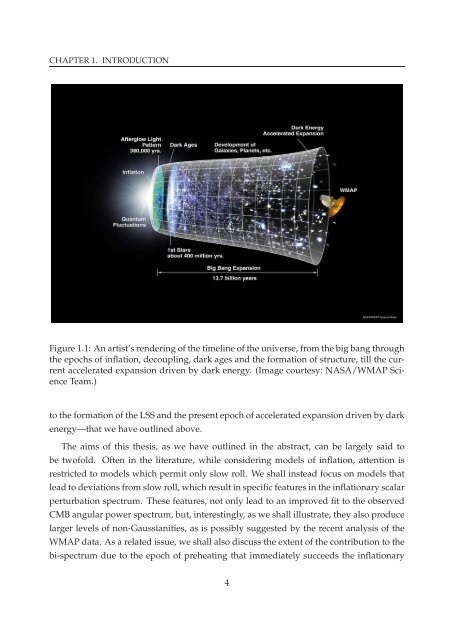PHYS08200605006 D.K. Hazra - Homi Bhabha National Institute
PHYS08200605006 D.K. Hazra - Homi Bhabha National Institute
PHYS08200605006 D.K. Hazra - Homi Bhabha National Institute
Create successful ePaper yourself
Turn your PDF publications into a flip-book with our unique Google optimized e-Paper software.
CHAPTER 1. INTRODUCTION<br />
Figure 1.1: An artist’s rendering of the timeline of the universe, from the big bang through<br />
the epochs of inflation, decoupling, dark ages and the formation of structure, till the current<br />
accelerated expansion driven by dark energy. (Image courtesy: NASA/WMAP Science<br />
Team.)<br />
to the formation of the LSS and the present epoch of accelerated expansion driven by dark<br />
energy—that we have outlined above.<br />
The aims of this thesis, as we have outlined in the abstract, can be largely said to<br />
be twofold. Often in the literature, while considering models of inflation, attention is<br />
restricted to models which permit only slow roll. We shall instead focus on models that<br />
lead to deviations from slow roll, which result in specific features in the inflationary scalar<br />
perturbation spectrum. These features, not only lead to an improved fit to the observed<br />
CMB angular power spectrum, but, interestingly, as we shall illustrate, they also produce<br />
larger levels of non-Gaussianities, as is possibly suggested by the recent analysis of the<br />
WMAP data. As a related issue, we shall also discuss the extent of the contribution to the<br />
bi-spectrum due to the epoch of preheating that immediately succeeds the inflationary<br />
4
















